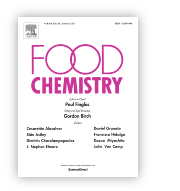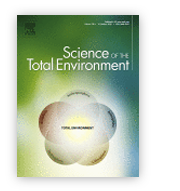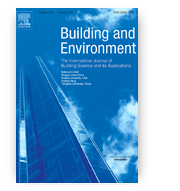
Research papers of the month – February 2023
We present the highest-score research papers of February 2023. These papers have ben published in journals with the highest Ministerial score – 200 points.
Chemistry behind quality – The usability of herbs and spices essential oils analysis in light of sensory studies
Jacek Łyczko; Anna Kiełtyka-Dadasiewicz; Mariusz Skrzyński; Krzysztof Klisiewicz; Antoni Szumny
Food Chemistry
Ministerial score = 200.0
Journal Impact Factor (2023) = 9.231 (Q1)
 The common protocols for the quality determination of medicinal and aromatic plants (MAPs), including herbs and spices (HSs), are the yield and composition of essential oils (EOs). Meanwhile, studies on the sensory quality of HSs showed that EOs composition does not translate to the profile of volatiles emitted from plants; therefore, they do not provide a background for sensory quality assessment. Thus, in this study, the differences in the composition of the EOs and the patterns of emission of unlimited (pure EOs) or limited (presence of a plant matrix) volatiles by headspace were measured for three chemotypes of mint, namely menthol, carvone, and linalool ones. The results have demonstrated that the presence of a plant matrix may change the contribution of main volatiles even up to 47 percentage points, what allows suggesting that EOs chemical analysis is not a reliable method for the determination of sensory quality of HSs.
The common protocols for the quality determination of medicinal and aromatic plants (MAPs), including herbs and spices (HSs), are the yield and composition of essential oils (EOs). Meanwhile, studies on the sensory quality of HSs showed that EOs composition does not translate to the profile of volatiles emitted from plants; therefore, they do not provide a background for sensory quality assessment. Thus, in this study, the differences in the composition of the EOs and the patterns of emission of unlimited (pure EOs) or limited (presence of a plant matrix) volatiles by headspace were measured for three chemotypes of mint, namely menthol, carvone, and linalool ones. The results have demonstrated that the presence of a plant matrix may change the contribution of main volatiles even up to 47 percentage points, what allows suggesting that EOs chemical analysis is not a reliable method for the determination of sensory quality of HSs.
DOI:10.1016/j.foodchem.2023.135537
Equation for determining cumulative particle size distribution using the pressure of a sedimenting suspension
Jarosław Kaszubkiewicz; Krzysztof Papuga
Measurement
Ministerial score = 200.0
Journal Impact Factor (2023) = 5.131 (Q1)
 One of the basic properties of soil––its particle size distribution (PSD)––can be measured using several techniques, among which methods based on sedimentation have a prominent place. Many of these sedimentation methods use changes in the density of a suspension to produce a PSD curve. A certain group of these measure changes in suspension pressure during the ongoing sedimentation process. To date, conversion of the measured changes in suspension pressure to cumulative PSD (CPSD) has been performed using statistical methods and not a physical model of the phenomenon. Here, this gap is filled. Based on the assumptions similar to used at the Stokes equation, an equation was derived linking the CPSD function with the function describing the changes in suspension pressure and its derivative. The derived equation allows direct calculation of the CPSD function based on changes in the pressure of the suspension at a specific depth. In this work, it is shown that the calculation in the reverse direction––obtaining a function describing the pressure in the suspension at a certain depth, PL(D), depending on the soil CPSD function––is also possible, although it requires use of the finite-difference method. The use of the derived equation to interpret test results is shown through examples of six selected soils with different PSDs.
One of the basic properties of soil––its particle size distribution (PSD)––can be measured using several techniques, among which methods based on sedimentation have a prominent place. Many of these sedimentation methods use changes in the density of a suspension to produce a PSD curve. A certain group of these measure changes in suspension pressure during the ongoing sedimentation process. To date, conversion of the measured changes in suspension pressure to cumulative PSD (CPSD) has been performed using statistical methods and not a physical model of the phenomenon. Here, this gap is filled. Based on the assumptions similar to used at the Stokes equation, an equation was derived linking the CPSD function with the function describing the changes in suspension pressure and its derivative. The derived equation allows direct calculation of the CPSD function based on changes in the pressure of the suspension at a specific depth. In this work, it is shown that the calculation in the reverse direction––obtaining a function describing the pressure in the suspension at a certain depth, PL(D), depending on the soil CPSD function––is also possible, although it requires use of the finite-difference method. The use of the derived equation to interpret test results is shown through examples of six selected soils with different PSDs.
DOI:10.1016/j.measurement.2023.112493
The importance of data splitting in combined NOx concentration modelling
Joanna Kamińska; Joanna Kajewska-Szkudlarek
Science of the Total Environment
Ministerial score = 200.0
Journal Impact Factor (2023) = 10.754 (Q1)
 The polluted air breathed every day by those living in large conurbations poses a significant risk to their health. Through effective modelling (prediction) of concentrations of pollutants and identification of the factors influencing them, it should be possible to obtain advance information on dangers and to plan and implement measures to reduce them. This work describes two different modelling approaches: based on the NOx concentration of the previous hour (C&RT models); and based on meteorological factors, traffic flow, and past (up to two previous hours) NOx and NO2 concentrations (CA models). For each approach, three alternative machine learning methods were applied: artificial neutral network (ANN), random forest (RF), and support vector regression (SVR). The best fits were obtained for the models using ANN and RF (MAPE values in the range 18.3–18.5 %). Poorer fits were found for the SVR models (MAPE equal to 23.4 % for the C&RT approach and 29.3 % for CA). No significant preferences were identified between the C&RT and CA approaches (based on various goodness-of-fit measures). The choice should be determined by the purposes for which the forecast is to be used.
The polluted air breathed every day by those living in large conurbations poses a significant risk to their health. Through effective modelling (prediction) of concentrations of pollutants and identification of the factors influencing them, it should be possible to obtain advance information on dangers and to plan and implement measures to reduce them. This work describes two different modelling approaches: based on the NOx concentration of the previous hour (C&RT models); and based on meteorological factors, traffic flow, and past (up to two previous hours) NOx and NO2 concentrations (CA models). For each approach, three alternative machine learning methods were applied: artificial neutral network (ANN), random forest (RF), and support vector regression (SVR). The best fits were obtained for the models using ANN and RF (MAPE values in the range 18.3–18.5 %). Poorer fits were found for the SVR models (MAPE equal to 23.4 % for the C&RT approach and 29.3 % for CA). No significant preferences were identified between the C&RT and CA approaches (based on various goodness-of-fit measures). The choice should be determined by the purposes for which the forecast is to be used.
DOI:10.1016/j.scitotenv.2023.161744
An international survey on residential lighting: Analysis of summer-term results
Rengin Aslanoglu; Jan Kazak; Sepideh Yekanialibeiglou; Piotr Pracki; Begüm Ulusoy
Building and Environment
Ministerial score = 200.0
Journal Impact Factor (2023) = 7.093 (Q1)
 Obtaining visual comfort, satisfaction and well-being in residential interiors are now becoming more important, especially in times of extreme events such as the COVID-19 pandemic. It also became important to collect users’ evaluations and their own solutions for residential lighting in order to improve the current lighting conditions. For this aim, with a group of international and inter-disciplinary researchers, a comprehensive study was con- ducted. This study is the last part of a three-stage investigation aimed at increasing our knowledge of the current lighting conditions in residential areas during and after the COVID-19 pandemic. For the current study, an online survey and in-depth interviews were conducted between June and August 2022 in Poland, Turkey, Sweden, and the U.K., with 520 participants. As results of this study show, a correlation was found between daylight satis- faction and its sufficiency. Similar correlations were found between artificial lighting satisfaction, its sufficiency, and its uniformity. The differences between seasons were detected for being very satisfied with daylight quality. Also, the correlation between satisfaction with daylighting and the ratio of windows showed difference among seasons. Stronger correlations between satisfaction with artificial lighting, its sufficiency and uniformity were found in summerterm according to winter-term results. Correlations between artificial lighting brightness – CRI and uniformity weakened in summer-term. Results from open-ended questions and in-depth interviews showed, removing the shading device and augmenting the characteristics of artificial lighting were the mostly done adjustments during the COVID- 19 pandemic. The most prominent theme is visual comfort according to the in- depth interview responses.
Obtaining visual comfort, satisfaction and well-being in residential interiors are now becoming more important, especially in times of extreme events such as the COVID-19 pandemic. It also became important to collect users’ evaluations and their own solutions for residential lighting in order to improve the current lighting conditions. For this aim, with a group of international and inter-disciplinary researchers, a comprehensive study was con- ducted. This study is the last part of a three-stage investigation aimed at increasing our knowledge of the current lighting conditions in residential areas during and after the COVID-19 pandemic. For the current study, an online survey and in-depth interviews were conducted between June and August 2022 in Poland, Turkey, Sweden, and the U.K., with 520 participants. As results of this study show, a correlation was found between daylight satis- faction and its sufficiency. Similar correlations were found between artificial lighting satisfaction, its sufficiency, and its uniformity. The differences between seasons were detected for being very satisfied with daylight quality. Also, the correlation between satisfaction with daylighting and the ratio of windows showed difference among seasons. Stronger correlations between satisfaction with artificial lighting, its sufficiency and uniformity were found in summerterm according to winter-term results. Correlations between artificial lighting brightness – CRI and uniformity weakened in summer-term. Results from open-ended questions and in-depth interviews showed, removing the shading device and augmenting the characteristics of artificial lighting were the mostly done adjustments during the COVID- 19 pandemic. The most prominent theme is visual comfort according to the in- depth interview responses.
DOI:10.1016/j.buildenv.2022.109972
Evaluation of bioactive compounds, volatile compounds, drying process kinetics and selected physical properties of vacuum impregnation celery dried by different methods
Magdalena Kręcisz; Joanna Kolniak-Ostek; Jacek Łyczko; Bogdan Stępień
Food Chemistry
Ministerial score = 200.0
Journal Impact Factor (2023) = 9.231 (Q1)
 We have developed a new healthy snack based on celery root enriched with vegetable juices. Vacuum impregnation was used the task of which was to introduce additional valuable substances, improving properties. Thus, prepared material was dried by various methods (sublimation, vacuum, convection) using optimal conditions for the process. In the tested sample, 41 bioactive compounds and 73 volatile compounds were identified. Vacuum impregnation of celery root in the juices of onion, kale and celery stalks significantly affected the profile of bioactive compounds, Volatile Organic Compounds (VOCs), total phenolic content, antioxidant properties, drying process kinetics and physical properties of the dried products. The highest nutrient values were recorded in celery samples after impregnation with kale and onion juice. Due to its good functional and nutritional properties, the material such as celery obtained as a result vacuum impregnation process can be envisioned as the future in creating novel functional foods.
We have developed a new healthy snack based on celery root enriched with vegetable juices. Vacuum impregnation was used the task of which was to introduce additional valuable substances, improving properties. Thus, prepared material was dried by various methods (sublimation, vacuum, convection) using optimal conditions for the process. In the tested sample, 41 bioactive compounds and 73 volatile compounds were identified. Vacuum impregnation of celery root in the juices of onion, kale and celery stalks significantly affected the profile of bioactive compounds, Volatile Organic Compounds (VOCs), total phenolic content, antioxidant properties, drying process kinetics and physical properties of the dried products. The highest nutrient values were recorded in celery samples after impregnation with kale and onion juice. Due to its good functional and nutritional properties, the material such as celery obtained as a result vacuum impregnation process can be envisioned as the future in creating novel functional foods.
DOI:10.1016/j.foodchem.2023.135490










